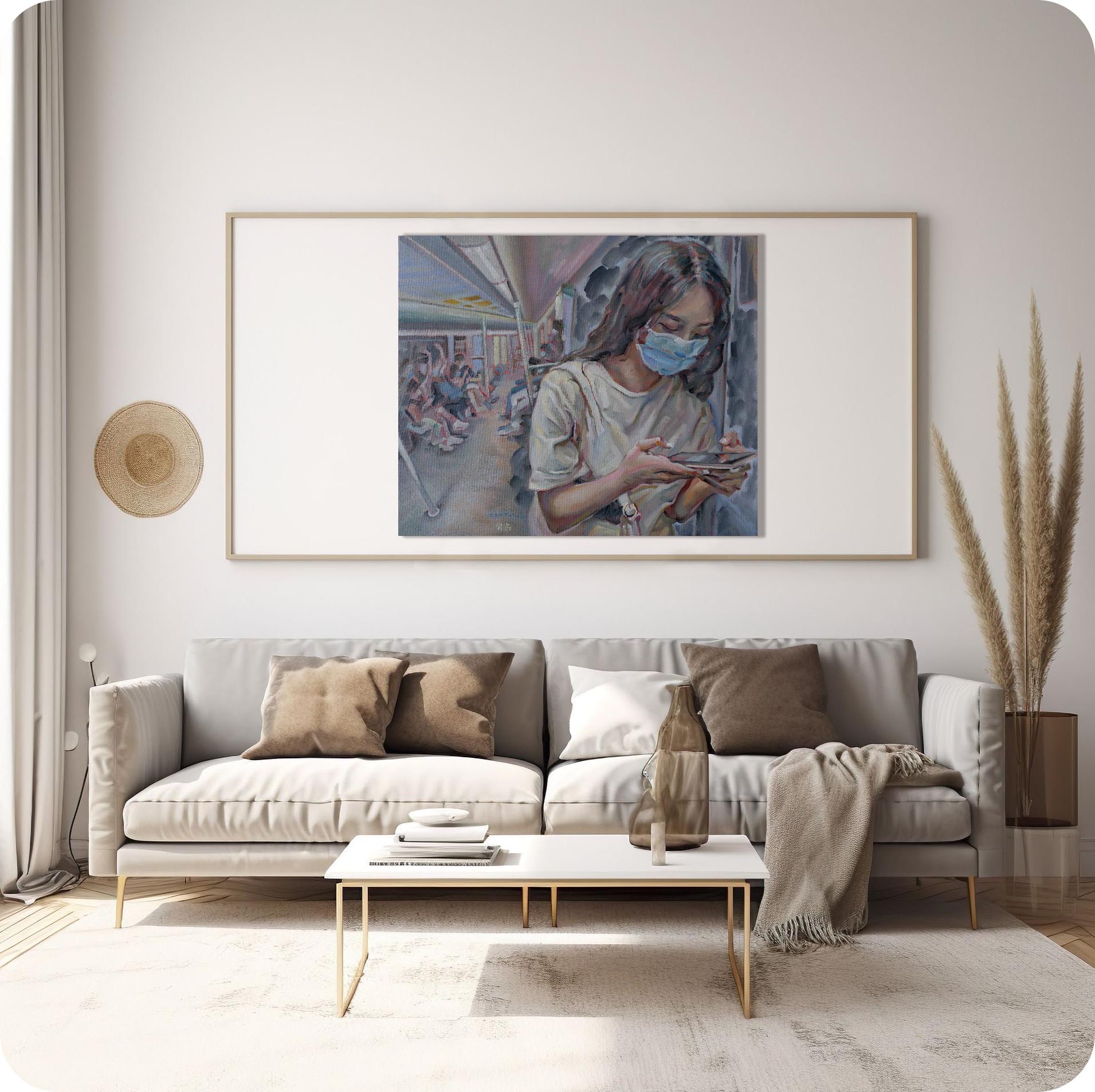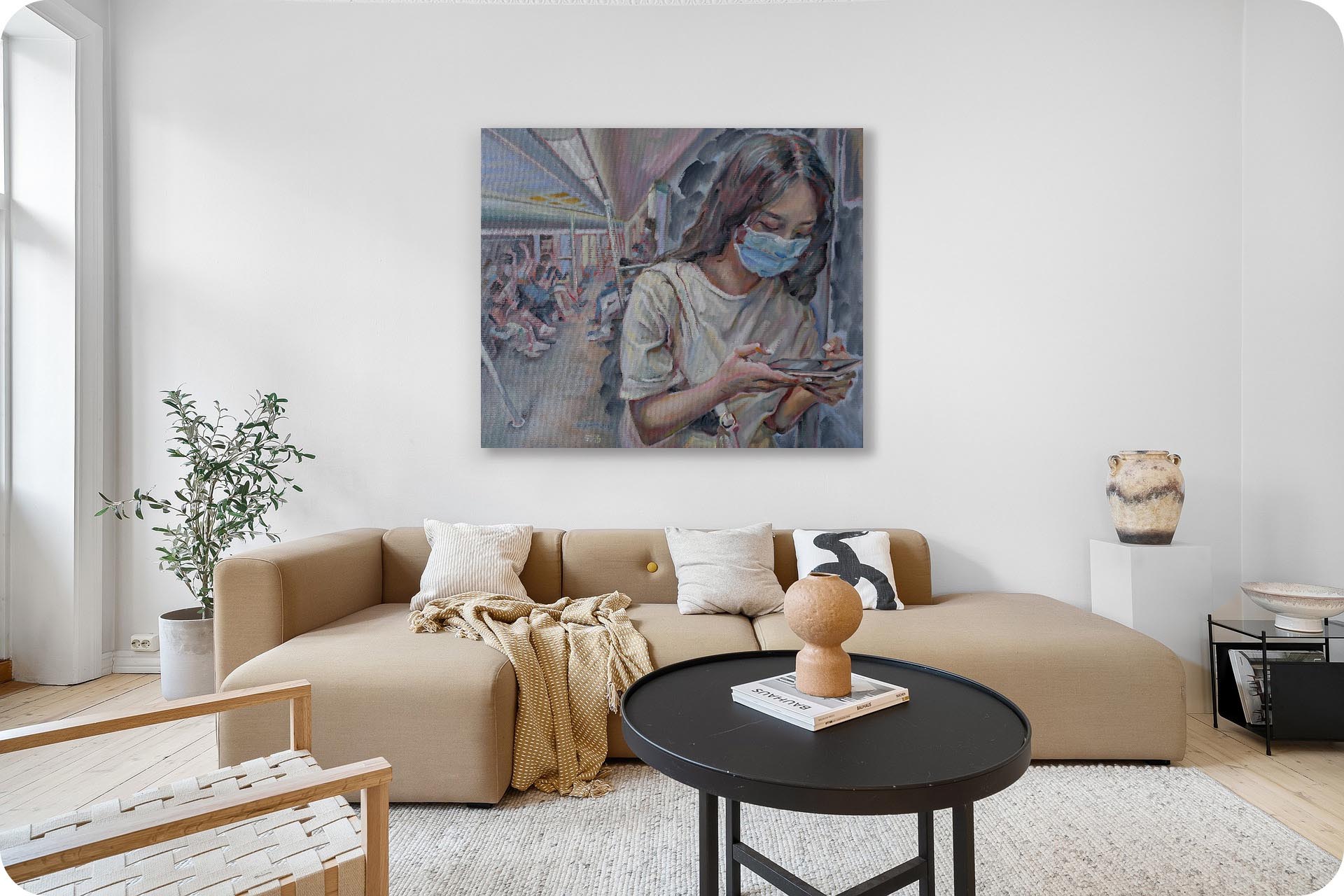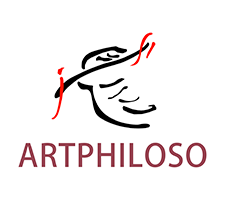This painting was created in 2021. I spent half of this year teaching painting and the rest of the time traveling alone. There are less paintings and more poetry creation. Most of the feelings about the works come from what I saw during my travels.
An everyday shot in Shanghai's nighttime subway. The colors are quiet and ordinary. The "passing of time" does not have any special meaning or emotion in the same scene day after day.
Inches: 19.7 x 23.6 in
Size without the frame: 50 x 60 cm
Country: China
Date: 2021
Materials: Oil paint on linen
Condition: well preserved
Creative themes and style | My works revolve around the creative concept of "The land of humanity, People on the land". The people in the painting are people in nature, and the lines, shapes, and colors are close to nature. The nature in the painting is nature in the eyes of humans, existing in interaction with humans.I don’t pursue a series of works with a fixed and continuous style. I hope that the style of the pictures will synchronize with the changes in my life and always remain oscillating. The performance of the work must be in sync with the development of one's own life in order to be Sincere and powerful. Ideas are later.
An Interview with Artist Philo by Artphiloso Gallery
If you would like to collect this artwork or know more about the artist, please contact us.
abstract oil painting,abstract art wallpaper,modern art deco,acrylic painting techniques.


The painting directly reflects an urban scene during the pandemic: masks, the subway, and people separated yet sharing the same space. The title refers not only to physical social distancing but also to the psychological gap between individuals.
A young woman in the foreground looks down at her phone, her face partially concealed by a mask, making her emotions unreadable. This composition turns her into an anonymous yet universal urban figure, while also emphasizing the viewer’s sense of distance from her.
The distant passengers are painted with soft, almost indistinct strokes, capturing the crowded, hurried atmosphere of the subway. This treatment renders them as a generalized “collective backdrop”, which in turn heightens the isolation and focus of the central figure.
The painting is a portrait of private solitude within public space. Each individual is absorbed in their own screens and thoughts; even in the same carriage, they remain separate. It reflects the intertwined realities of digital life and the pandemic era.
The overall use of gray-blue and pale pink hues creates a subdued yet quiet mood. Combined with the white artificial lighting, the palette emphasizes the inorganic atmosphere of the city, mirroring the sense of detachment among people.
The piece merges social documentary qualities with painterly lyricism, making it a bridge between private collecting and public exhibition. It not only records a distinctive historical moment but also offers an artistic expression of modern solitude.
A: Click here to view ARTPHILOSO's Guide for Collectors.
